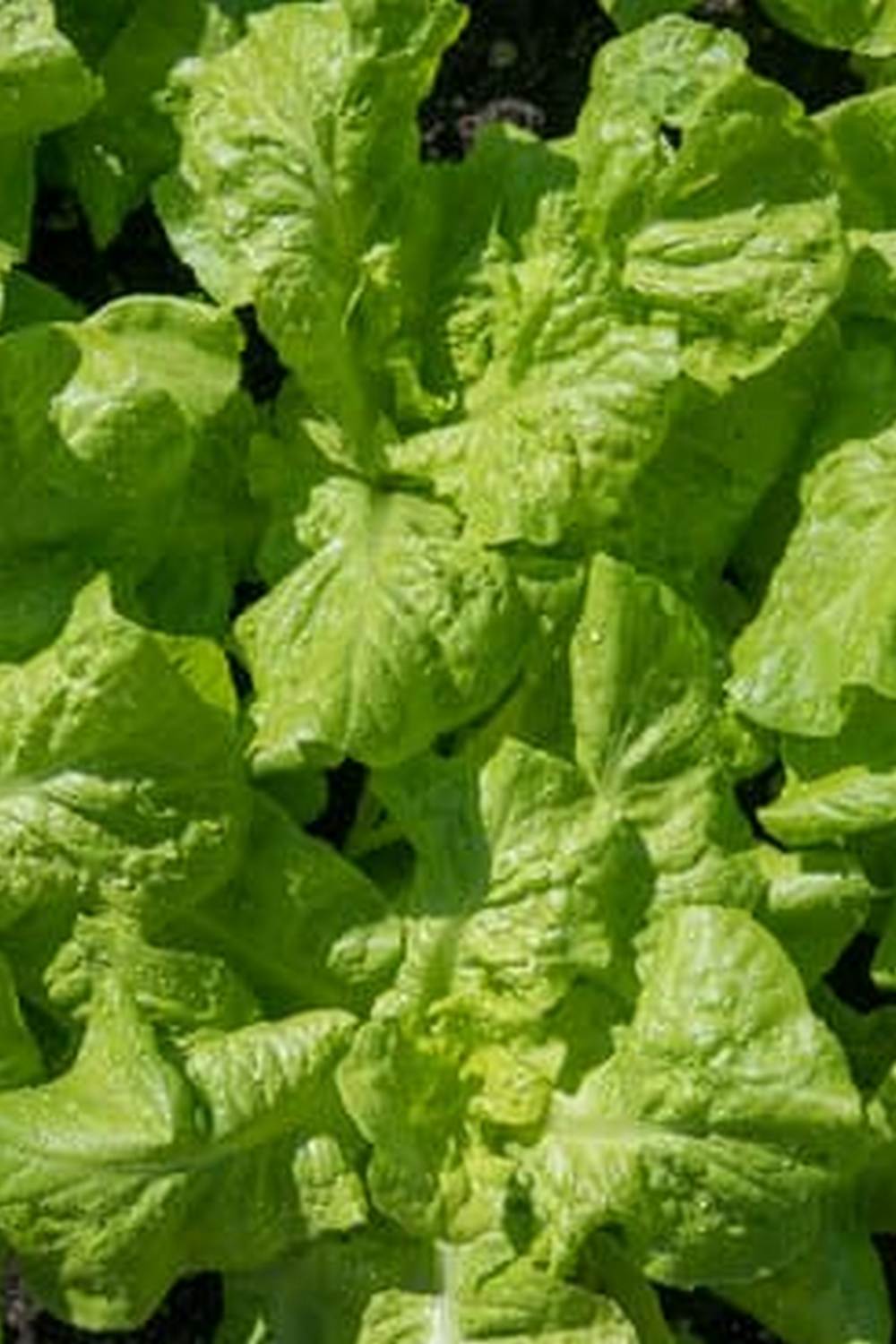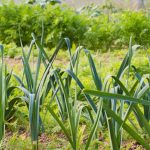Urban gardening has become a growing trend in recent years, with many city dwellers opting to grow their own vegetables in limited spaces. Whether you have a small balcony, rooftop, or even just a sunny windowsill, there are plenty of options for cultivating your own urban oasis. In this article, we will explore the best vegetables for urban gardens, perfect for those looking to embark on their gardening journey in the city.
One of the key factors to consider when selecting vegetables for urban gardens is choosing varieties that thrive in compact environments and require minimal space to grow. With the right selection of vegetables, even the smallest of spaces can yield a bountiful harvest. Additionally, growing your own vegetables provides numerous benefits such as access to fresh produce, cost savings, and the satisfaction of knowing exactly where your food comes from.
From cherry tomatoes and salad greens to radishes and cucumbers, there is a wide range of vegetables that are well-suited for urban garden settings. With the rise of vertical gardening techniques and container gardening solutions, city dwellers have more options than ever to successfully grow their own produce. Stay tuned as we delve into tips for choosing the right vegetables, container gardening strategies, and seasonal planting guides to help you make the most of your urban garden space.
Choosing the Right Vegetables
When it comes to urban gardening, selecting the right vegetables is crucial for success in limited spaces. The best vegetables for urban gardens are those that thrive in such environments and require minimal space to grow effectively. By choosing the right vegetables, urban gardeners can maximize their produce yield and make the most of their gardening efforts.
Consider Your Space
Before selecting which vegetables to grow in your urban garden, it’s essential to consider the amount of space you have available. Some veggies, like cherry tomatoes and salad greens, are well-suited for small containers or raised beds. Others, such as cucumbers and pole beans, require vertical structures for optimal growth. Assessing your space constraints will help you determine which vegetables are right for your urban garden.
Choose High-Yield Varieties
In urban gardening, where space is limited, it’s advisable to select high-yield vegetable varieties that produce abundant harvests in small spaces. Vegetables like radishes, zucchini, and peppers are known for their productivity and compact growth habits, making them excellent choices for urban gardens. By opting for high-yield varieties, urban gardeners can make the most of their limited growing space and enjoy a bountiful harvest throughout the season.
Focus on Quick-Growing Options
When selecting vegetables for your urban garden, prioritize quick-growing options that reach maturity within a short period. Vegetables like lettuce, spinach, and radishes have fast growth cycles and can be harvested multiple times throughout the season. These quick-growing options not only optimize space efficiency but also provide a steady supply of fresh produce for city dwellers with limited gardening space. Consider incorporating these fast-growing veggies into your urban garden for a rewarding growing experience.
Container Gardening
Here are some types of containers commonly used in urban gardens:
- Traditional clay or plastic pots
- Raised beds
- Hanging baskets
- Window boxes
Before planting your vegetables in containers, it is essential to properly prepare them to ensure successful growth. Start by filling the containers with a high-quality potting mix that is rich in nutrients and provides good drainage. It is also recommended to add a layer of gravel or small rocks at the bottom of the container to enhance drainage and prevent waterlogging.
Once your containers are filled with soil, make sure to water them thoroughly before planting your vegetable seeds or seedlings. Depending on the size of the container and the type of vegetable you are growing, you may need to add stakes or trellises for support as the plants grow. With proper care and maintenance, container gardening can be a rewarding way to grow your own fresh produce in an urban setting.
Remember that when selecting the best vegetables for urban gardens, consider those that are well-suited for container gardening and limited spaces. Some examples include:
- Cherry tomatoes
- Salad greens (lettuce, spinach)
- Radishes
By choosing the right containers and preparing them properly for planting, you can easily cultivate a thriving urban garden filled with delicious homegrown vegetables.
Best Vegetables for Small Spaces
Urban gardening has become increasingly popular as more people embrace the idea of growing their own food in limited spaces. One of the key considerations when starting an urban garden is choosing the right vegetables that are well-suited for small spaces and urban environments. Selecting the best vegetables for urban gardens is crucial to ensure a successful harvest while maximizing space efficiency.
Cherry Tomatoes
Cherry tomatoes are one of the best vegetables for urban gardens due to their compact size and high productivity. These small, sweet tomatoes can be grown in containers or hanging baskets, making them ideal for limited spaces. Cherry tomatoes also tend to have a longer fruiting period, providing a continuous harvest throughout the growing season.
Salad Greens
Salad greens, such as lettuce, arugula, and spinach, are perfect choices for urban gardeners looking to grow fresh, nutritious produce at home. These leafy greens are quick-growing and do not require a lot of space to thrive. They can be easily grown in containers or vertical planters, allowing urban gardeners to have a constant supply of fresh salad greens at their fingertips.
Radishes
Radishes are another excellent choice for small-space gardening in urban areas. These root vegetables have a fast growth cycle, making them ideal for beginner gardeners or those with limited gardening experience. Radishes can be grown in containers or raised beds and are ready to harvest in just a few weeks. Their peppery flavor adds a delicious crunch to salads and other dishes, making them a versatile addition to any urban garden.
Vertical Gardening
When it comes to choosing the best vegetables for vertical gardening, cucumbers and pole beans are excellent options. Cucumbers thrive when grown vertically as they have vines that can easily climb up trellises or other support systems.
Vertical growth not only saves space but also helps keep the cucumbers off the ground, reducing the risk of pests and diseases. Pole beans are another ideal choice for vertical structures, as they twine around supports naturally and produce an abundant harvest in a compact area.
In addition to cucumbers and pole beans, other vegetables that do well in vertical gardens include tomatoes, peas, squash, and peppers. These plants can be trained to grow upwards with the help of stakes or cages, making them suitable for small spaces like balconies or patios. By incorporating a variety of vertically-growing vegetables in your urban garden, you can create a lush green oasis while maximizing your harvest potential throughout the growing season.
| Vertical Gardening Vegetables | Description |
|---|---|
| Cucumbers | Climb up trellises easily, saving space and reducing pests |
| Pole Beans | Naturally twine around support systems for abundant harvests |
| Tomatoes | Can be trained to grow upwards on stakes or cages |
Companion Planting
One popular companion planting strategy for urban gardens is intercropping, which involves planting complementary crops together in the same area. For example, growing leafy greens like lettuce alongside taller vegetables such as tomatoes can help provide shade for the lettuces while optimizing space.
Additionally, certain plants can act as natural pest deterrents for others when planted in close proximity. For instance, planting aromatic herbs like basil or rosemary near susceptible vegetables can help repel pests and reduce the need for chemical pesticides.
In addition to pest control and space optimization, companion planting in urban gardens can also support healthier plant growth through improved soil quality and nutrient uptake. Some plants have symbiotic relationships where they work together to fix nitrogen in the soil or provide support for climbing vegetables.
When selecting the best vegetables for urban gardens, it’s important to consider not only the individual plant requirements but also how they interact with other plants in a companion planting setting to create a thriving garden ecosystem.
| Companion Plants | Benefits |
|---|---|
| Basil and Tomatoes | Basil repels pests that attack tomatoes |
| Marigolds and Cucumbers | Marigolds deter harmful nematodes that feed on cucumber roots |
Seasonal Planting Guide
Urban gardening offers a unique opportunity for city dwellers to grow their own fresh produce, even in limited spaces. One of the key factors in successful urban gardening is selecting the right vegetables that thrive in these environments.
When choosing what to plant in your urban garden, consider factors such as sunlight exposure, space constraints, and ease of maintenance. To help you make the most of your urban garden, here are some of the best vegetables for urban gardens:
- Cherry Tomatoes: These petite tomatoes are perfect for small spaces and can be grown in containers or hanging baskets. They require full sun and regular watering to thrive.
- Salad Greens: Varieties like lettuce, spinach, and arugula are excellent choices for urban gardens as they can be grown in shallow containers and have a quick growing cycle.
- Radishes: Radishes are fast-growing root vegetables that do well in containers or raised beds. They are ideal for beginner gardeners and can be harvested within a few weeks of planting.
In addition to choosing the right vegetables, it’s important to understand when to plant them for optimal growth. Different vegetables have specific growing seasons and planting windows that should be followed to ensure a bountiful harvest. Here is a seasonal planting guide to help you plan out your urban garden throughout the year:
- Spring: Plant cool-weather crops like lettuce, kale, radishes, and peas early in the season when frost has passed.
- Summer: Grow heat-loving vegetables such as tomatoes, cucumbers, peppers, and eggplants during the warmer months when temperatures are consistently above 60°F.
- Fall: Extend your harvest by planting cold-hardy crops like carrots, beets, spinach, and Swiss chard in late summer for a fall harvest.
By following this seasonal planting guide and choosing the best vegetables for urban gardens, you can enjoy a continuous supply of fresh produce all year round right from your own backyard – no matter how small it may be.
Tips for Maintaining Urban Gardens
Urban gardening has become increasingly popular in urban areas as more people recognize the benefits of growing their own food in limited spaces. With the right knowledge and resources, it is possible to cultivate a thriving vegetable garden even in the midst of city living. One essential aspect of maintaining healthy vegetable growth in urban gardens is through proper maintenance practices such as watering, fertilizing, and pest control.
Watering is crucial for the health and development of vegetables in urban gardens, especially since containers or small garden beds can dry out quickly. It is important to water consistently and deeply, ensuring that the roots receive enough moisture to thrive. Using a drip irrigation system or self-watering containers can help to maintain optimal soil moisture levels without overwatering or underwatering your plants.
Fertilizing is another key component of maintaining healthy vegetable growth in urban gardens. Organic fertilizers such as compost or compost tea are excellent choices for providing essential nutrients to your plants without harmful chemicals. Additionally, rotating crops and incorporating cover crops can help replenish nutrients in the soil and prevent nutrient depletion over time.
Pest control is also crucial in urban gardens where space constraints can lead to higher pest populations. Implementing natural pest control methods like companion planting, introducing beneficial insects, or using organic pesticides can help protect your vegetables from common pests while avoiding harmful chemicals that may affect plant growth and soil health.
In conclusion, by following these practical tips on watering, fertilizing, and pest control in urban garden settings, you can ensure healthy vegetable growth and bountiful harvests throughout the growing season. With careful planning and consistent maintenance practices, urban gardeners can enjoy growing a variety of vegetables tailored to small spaces while contributing to a greener and more sustainable urban environment.
Remember that with dedication and good practices, even the smallest urban garden can yield an abundance of fresh produce for you to enjoy.
Frequently Asked Questions
How Do I Start an Urban Vegetable Garden?
Starting an urban vegetable garden is a rewarding experience that begins with selecting the right location. Choose a spot with ample sunlight, good soil, and access to water. Consider container gardening if space is limited.
Next, decide which vegetables you want to grow and research their specific planting and care requirements. Lastly, invest in quality seeds or seedlings, necessary gardening tools, and commit to regular maintenance to ensure a successful harvest.
What Can Be Grown in an Urban Farm?
Urban farms have the potential to grow a variety of crops depending on available space and resources. Common vegetables grown in urban settings include tomatoes, lettuce, peppers, cucumbers, carrots, and herbs like basil and mint.
Fruits such as strawberries and blueberries can also thrive in urban farm environments. Some urban farms even incorporate livestock like chickens for eggs or bees for honey production.
What Vegetables Are Best for Small Garden?
When planning a small garden, it’s essential to choose vegetables that are suitable for limited space but still productive. Compact varieties of tomatoes, peppers, and cucumbers are ideal because they can be grown vertically or in containers.
Leafy greens like lettuce, spinach, and arugula are perfect for small gardens since they require minimal space to flourish. Root vegetables such as radishes, carrots, and beets can also be successfully grown in small garden plots due to their efficient use of underground space for growth.

If you’re looking to get into vegetable gardening, or are just looking for some tips on how to make your current garden better, then you’ve come to the right place! My name is Ethel and I have been gardening for years. In this blog, I’m going to share with you some of my best tips on how to create a successful vegetable garden.





